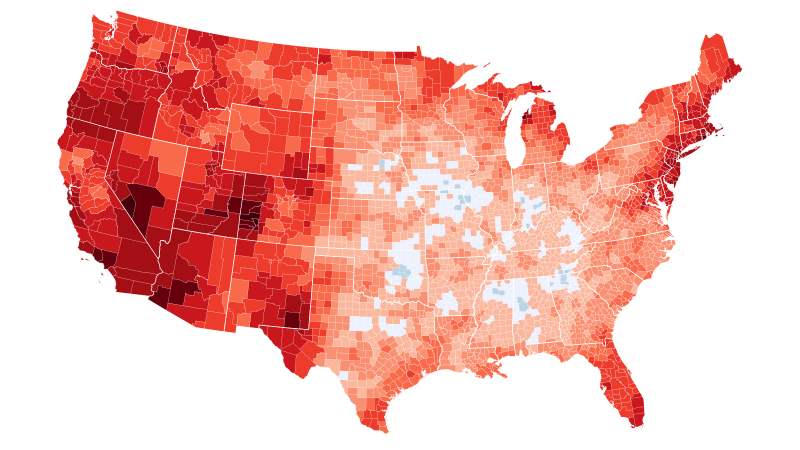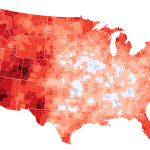The summer of 2024 is proving to be a stark reminder of the uneven impact of climate change across the United States. While some regions swelter under record-breaking heatwaves, others experience comparatively moderate temperatures, highlighting a geographical disparity in the nation’s experience of extreme weather. This uneven distribution isn’t simply a matter of regional climate variations; it speaks to deeper societal inequalities and the complex interplay of climate change with existing infrastructure and socioeconomic factors.
**A Nation Divided by Degrees: Geographic Variations in Heat**
The most immediate observation is the geographical contrast in summer temperatures. While the Southwest continues to grapple with prolonged and intense heatwaves, pushing power grids to their limits and endangering vulnerable populations, other parts of the country experience relatively milder conditions. This isn’t to downplay the challenges faced in these cooler regions; even moderate temperature increases can strain resources and impact agricultural yields. However, the sheer intensity and frequency of extreme heat in the Southwest and other parts of the country present a clear and present danger. These regions are facing a perfect storm of factors, including prolonged droughts, urban heat island effects (where cities trap heat), and inadequate access to cooling infrastructure.
The data paints a compelling picture. Reports from the National Oceanic and Atmospheric Administration (NOAA) and other meteorological agencies consistently highlight the increasing frequency and severity of heatwaves in the Southwest, coupled with longer-lasting periods of extreme heat. This prolonged exposure is particularly harmful to human health, leading to heatstroke, respiratory illnesses, and increased mortality rates among vulnerable populations, such as the elderly and those with pre-existing health conditions. These disparities are further exacerbated by the lack of access to reliable air conditioning and adequate healthcare in many communities.
**Socioeconomic Factors Exacerbate the Heat Crisis**
The unequal impact of extreme heat is not solely a geographical phenomenon; it’s deeply intertwined with socioeconomic factors. Low-income communities and communities of color disproportionately bear the brunt of extreme heat due to several contributing factors. These communities often lack access to reliable air conditioning, live in older buildings with poor insulation, and are more likely to work outdoors in physically demanding jobs. This intersection of geography, economic status, and race creates a particularly vulnerable population highly susceptible to heat-related illnesses and mortality.
Furthermore, limited access to green spaces and urban planning strategies that mitigate the urban heat island effect further intensifies the problem in these communities. The absence of trees and parks, which provide natural shade and cooling, contributes to higher temperatures in already disadvantaged neighborhoods. This lack of investment in infrastructure and community resources underscores a significant societal inequality within the context of climate change.
**The Urgent Need for Adaptation and Mitigation**
The uneven distribution of summer heat across the United States underscores the urgent need for both adaptation and mitigation strategies. Mitigation efforts, focusing on reducing greenhouse gas emissions to slow down climate change, are crucial in the long term. However, immediate adaptation measures are vital to protect vulnerable populations from the current and projected impacts of extreme heat.
This includes increased investment in cooling infrastructure, particularly in low-income communities, the development of early warning systems for heatwaves, and public health campaigns to educate people about the dangers of extreme heat and how to protect themselves. Furthermore, urban planning strategies that prioritize green spaces and sustainable building design are essential to mitigate the urban heat island effect. Addressing this unequal distribution of heat necessitates a multifaceted approach that tackles both the environmental and socioeconomic dimensions of the climate crisis. Only through collaborative efforts involving governments, communities, and individuals can we hope to create a more resilient and equitable future in the face of rising temperatures.
Based on materials: CNN





